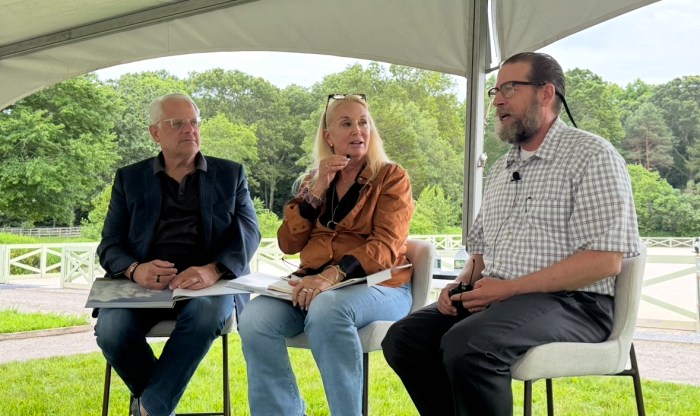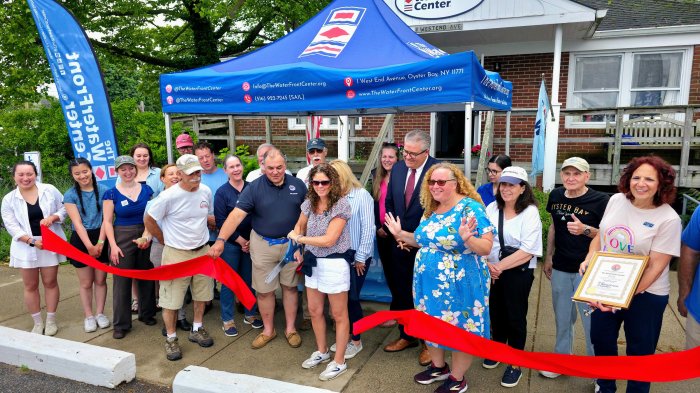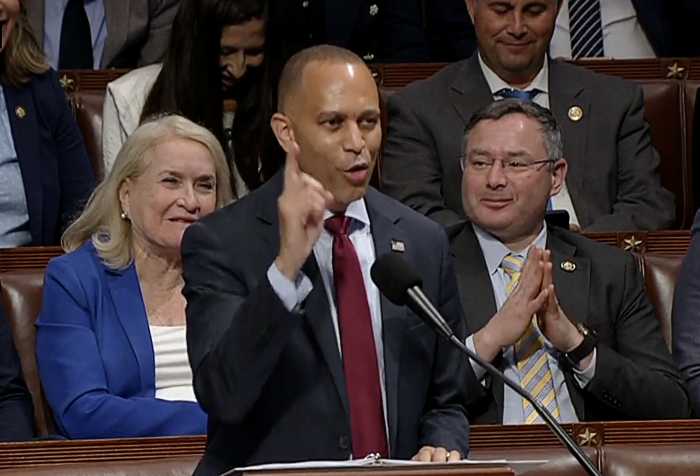The contaminated Carmans River got a step cleaner when Brookhaven Town officials enacted new requirements to reduce the concentration of nitrogen in surface and groundwater that are stricter than Suffolk County’s standards.
Co-sponsored by Brookhaven Town Supervisor Ed Romaine and Councilwoman Connie Kepert, the amendment to the town code was unanimously approved by the town board last week. The town held a public hearing about it on Tuesday. Environmentalists, civic leaders and elected officials hailed the action because it means that Brookhaven has become the first town on Long Island to have waste-water treatment standards of 3 parts-per-million per liter, which is more stringent than the 10 parts-per-million level currently allowed by the county’s health department—an amount seen as woefully inadequate given the imperiled health of the Island’s crucial waterways.
The rules apply to all properties with existing or future septic systems in the intermediate flow category, which means producing between 1,000 and 30,000 gallons a day of waste water. On average a septic system for a single-family household processes about 300 to 400 gallons a day. Coming under this amended code are businesses, apartments, condos and planned retirement communities. Developers of new construction have to comply immediately, but owners of existing properties have 10 years or they’ll face fines of $500 or more. Only about a dozen buildings and two privately owned sewage-treatment systems are reportedly affected by the town’s action.
“Existing state and county standards allowing sewage treatment plants to discharge 10 parts per million of nitrogen are not protective of the Carmans River ecosystem,” said Romaine in a statement. “Our new, stringent standard would offer greater protection, and result in the long-term conservation of the river and its water quality for the benefit of current and future generations.”
The move grew out of a recommendation from the Carmans River Conservation and Management Plan, approved by the town board in October 2013, which called for a new science-based standard for effluent from medium flow sewage treatment plants to protect the river’s ecosystem from the harmful effects of too much nitrogen including harmful algae growth, the proliferation of non-native aquatic plants, low dissolved oxygen levels and other ecosystem changes caused by an excess of nitrogen.
“I’m thrilled,” Kevin McAllister, president of Sag Harbor-based environmental advocacy group, Defend H20, told the Press. A long-time advocate for tougher sewage treatment to offset the county’s antiquated septic systems, McAllister praised Romaine for going beyond the county’s health standard to take into consideration the watershed’s ecology. “Ed’s been tremendous on this issue, going back to his tenure in the county legislature.”
McAllister and other activists are hoping that the five towns on the East End will follow Brookhaven’s lead—and maybe their example will influence Long Island’s two counties.
“I can’t tell you how many times I’m at these planning board and town board meetings where these developments are coming in and they’re still including the conventional septic systems that the county approves!” said McAllister.
MaryAnn Johnston, president of the Affiliated Brookhaven Civic Organization [ABCO], credits McAllister as “a driving force” in his effort to “actually get the town off the dime” and finally adopt this new sewage-system requirement in the 18,000-acre Carmans River watershed, which includes all of the 100-year groundwater contributing area (a measurement of where the flow would take that long to eventually reach the river).
“For a very long time the town was extremely resistant to doing it because they were continuing to tell us they could not override Suffolk County,” said Johnston. “We gave them case law that showed them that the Court of Appeals said that indeed you can.”
As Pine Barrens Society Executive Director Richard Amper explained, under state law, “if a municipality wants to be more protective, then it is entitled to [do so.]”
Amper views this amendment as an important first step.
“The river isn’t going to get clear any time soon,” Amper explained, but “this is a good start, especially if it catches on with other towns… We know that we have too much nitrogen for the groundwater to support, so we have to reduce nitrogen and this is a good way to do it.”
He’s hoping the state will also get in the act, noting that last year the Assembly passed a bill sponsored by former Assemb. Robert Sweeney (D-Lindenhurst) that would have lowered the effluent standards to the level Brookhaven just approved but the state Senate never even brought it to the floor for a vote, much to the disappointment of its co-sponsor, state Sen. Ken LaValle (R-Port Jefferson).
“We want a watershed specific discharge standard for every watershed, based on how contaminated that water is at the location,” Amper said.
That Brookhaven—a town with a challenging environmental record—should now take the lead on watershed protection is especially gratifying to an activist like McAllister, who called it “tremendous” and “a feather in their cap.” He wants Suffolk County Executive Steve Bellone to take notice.
“Essentially when we’re dealing with un-sewered areas in Suffolk County,” explained McAllister, “this should be the law of the land.”
And there’s a reason Long Island’s watersheds could use some help with nitrogen relief.
As ABCO’s Johnston put it bluntly, “The Forge River is still dead!”

































